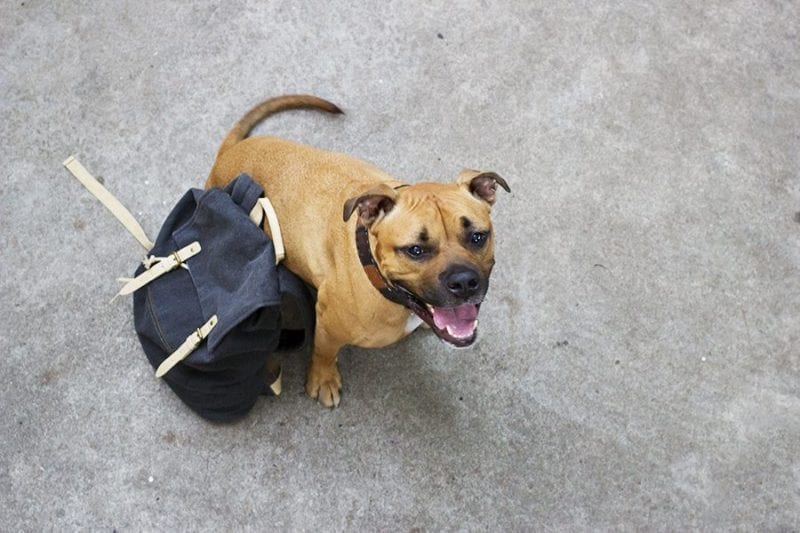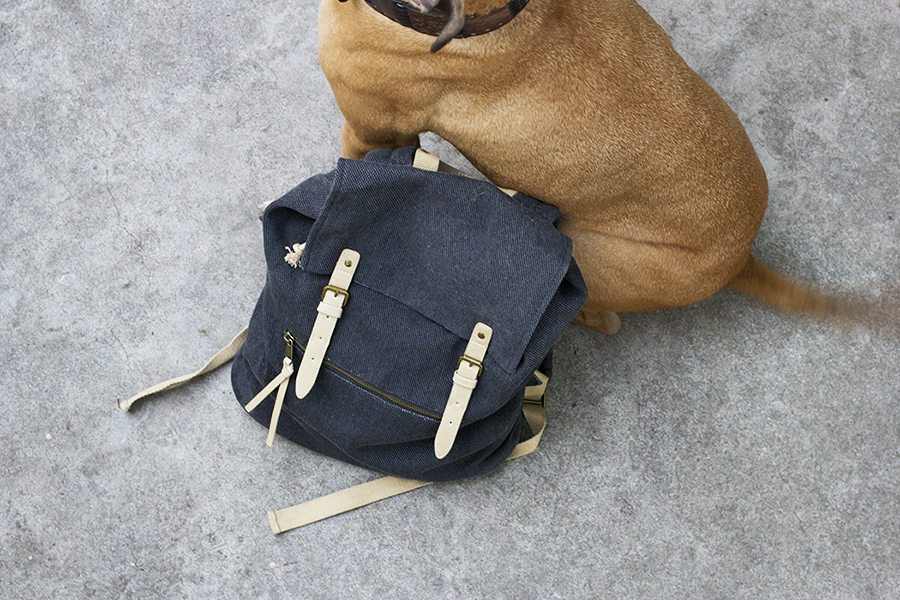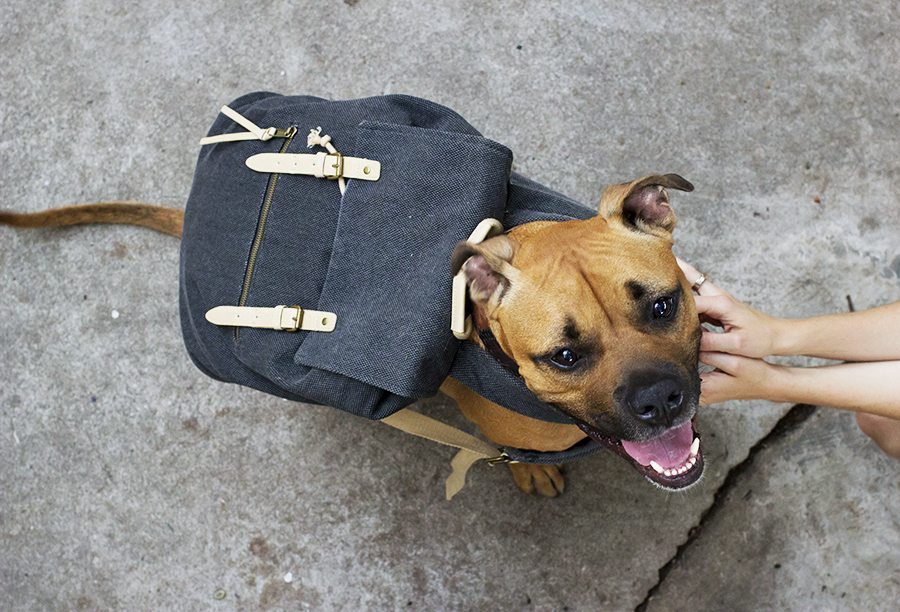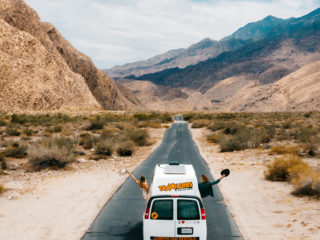Traveling with a dog is rewarding, but it does take work.
In the past, my dog Maya and I have lived in Turkey and traveled from Athens to Prague. As of June 2015, we are traveling through Europe, Asia, Oceanian, South and Central America. As a travel partner, Maya doesn’t whine about where we go, what we see (or what we don’t), or how fast we go. She is content to lie at my feet in a café, sleep next to me in a tent, and walk at my leisure. While there is great deal of effort that goes into traveling with a dog, I prefer Maya’s long-term companionship to a trip by myself.
People have often asked me how complicated it is to travel with a dog. If you are interested in adding your pup to your travel plans, here are a few of the most important things to consider based on my life-learned experiences.
PLANNING
Depending on how long and where your adventure will be, there are many things to consider.
First, figure out the paperwork. Sometimes a rabies antibody titration test is required for entry and must be done a certain amount of time before departure day. There are strict rules regarding when this test can be done in relation to the last rabies booster and microchip implantation. After all requirements are complete, but only within ten (10) days of entry, usually a health certificate is required for entry into a designated country.
To obtain the version required by the country you are going to, research both the USDA and the destination country’s import website. Only a certified USDA vet can complete this form, after which the regional USDA has to sign off on the form in order to make it valid. Ensuring that all of the paperwork is in line and handy at port of entry is THE key step in traveling with your dog.
Important Paperwork:
- Original rabies certificate
- Rabies titration results
- Microchip information
- Health certificates
Before purchasing your plane ticket, you must check an airline’s dog policies. Some have restrictions due to location, season, or number of dogs per plane in the cabin or baggage depending on the size of the dog. Call the airline to confirm that the flight you intend on purchasing is able to accommodate your request.
If you aren’t staying with a friend, finding lodging and figuring out transportation can also be a challenge, though it isn’t impossible. Research if pets are allowed on each transportation system (trains, subways, buses, and taxis) of the specific countries you plan to visit as part of the planning process. Getting around cities on foot is easy, but there can be great distances between where you may stay versus how you arrive. Google hotels or use websites that have “pet friendly” filters to identify a place to stay with your pup.
Maya and I have traveled via plane, taxi, train, rideshare, and stayed in hotels, hostels, B&Bs, Couchsurfing, campgrounds, patios, farmer’s land, and in extra rooms of strangers. We’ve met all sorts of people and have had all sorts of experiences along the way.
PACKING
While it is sometimes a struggle with what and how much we pack for ourselves, when packing for pups we also have to think about what they will need for the adventure.
Regardless of the extra stuff your pup may need to be comfortable (such as toys, a blanket, or a towel), food is vital. If your trip is short and has few stops, normally a bag of regular dog food is sufficient, depending on how much you normally give your pup. How to carry that will depend on the type of luggage you have and how much room it has. If you don’t want to carry the food from home, there is usually a pet store in every major city that carries most standard brands. Seek one out as soon as you arrive.
However, some circumstances require a different method of nourishment. During our current trip, Maya and I will be backpacking on a few long-term hikes. Therefore, weight is a huge concern and I have decided to make Maya’s food a few days at a time. After researching recipes on All Recipes and a few other sites through Google, I’ve found a few good ones that use easy-to-find ingredients and can be easily prepared in my JetBoil Mini Mo. Most of the time I use fresh veggies boiled together with rice and a meat source. Mix together and trust me, your pup will be in heaven! Bone supplements and other vitamins are also necessary and can be purchased at a local pet store when you arrive at your destination.
I am carrying my backpack and Maya carries her food and water (plus bowl) in a Ruff Wear Palisades Dog Pack. Maya began wearing her back for morning walks about six (6) weeks before the adventure. Ideally, training should occur in the same type of situation that your dog will be carrying the pack in. If you will be hiking, start going on short hikes and increase the time and difficulty. Have your pup wear it at intervals. As strength grows, the tolerance for the pack will too. Although it took some time to for her to get used to, Maya is comfortable wearing hers now, but I still have to be conscious of how much weight she is carrying to not overload her.
Bringing a dog, while rewarding, can also mean that you may have to lose out on seeing the inside of a normal must-see spot.
GO!
Ticket purchased. Health certificate authorized. Boarded. Arrived in destination.
Yay! Now to explore the city. Depending on your dog, pace is extremely important. Some dogs can go-go-go while others are more in need of rests and breaks. If a city or area is too crowded, you may have to forego the site and move on. I am lucky that Maya can be inside all day while I veg out, or go-go-go until we have walked to the next town or simply leisurely stroll a city.
However versatile she is, though, I still have to be conscious of her needs before mine.
We are in the middle hiking the Camino del Norte on the Atlantic Coast of Spain. When we started, Maya wasnt’t used to hiking 10-15 miles every day while carrying her own supplies. I have to watch her ears to see how reactive she is, her body language, and exhaustion level. Then, I modify our planned mileage, reset the pace, or change the length of allocated break times.
Most historical sites do not allow dogs. Bringing a dog, while rewarding, can also mean that you may have to lose out on seeing the inside of a normal must-see spot. Maya has plenty of pictures in front of guidebook musts, but I have never actually been inside.
Regardless of the sacrifices required to have a dog while traveling, Maya has opened the door to the start of many friendships that would not have otherwise taken place. Traveling can be stressful and also result in homesickness. With Maya by my side, many people who miss their pups at home come up to us and talk. Not only does she help off-set my own occasional down days, she helps others to smile and warms their hearts, as well.
Bringing a dog is not easy and it shouldn’t be. Dog owners should be proactive and diligent before taking on such a responsibility. However, for me, having Maya by my side while I admired the Parthenon in Greece, imagined Pompeii before it was ruins, explored gothic alleys of Barcelona, or while currently hiking the Camino makes all the effort worthwhile.
Would you (or have you) travel with your pet?
Images via Milena Mallory













